This season’s defining womenswear looks embrace fashion’s power for transformation
For S/S 2024, womenswear designers were seduced by fashion’s transformative power, exploring construction, fantasy and form. Here, Jack Moss explores the season’s defining looks in The Glossary, part of the March 2024 Style Issue of Wallpaper*
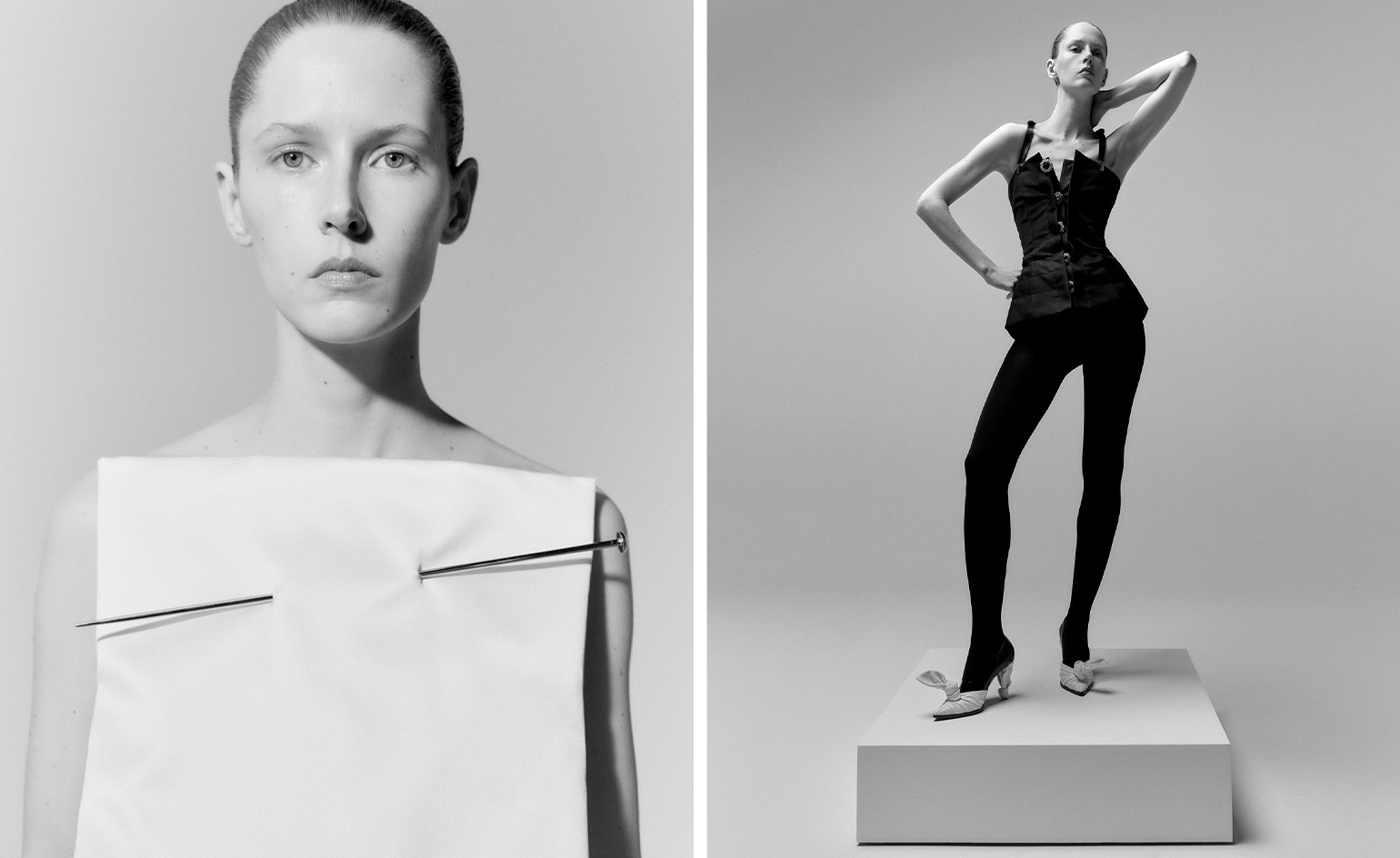
The penultimate look of Jonathan Anderson’s latest womenswear collection for Loewe featured an enormous golden dressmaker’s pin, skewered through the ecru-coloured gown – itself appearing like an unravelling roll of fabric – as if holding its folded form in place.
Earlier in the show, pins were also seen perforating the waistband of leather shorts, and they had made an appearance in Anderson’s menswear collection, shown a few months prior, piercing through brocade tops. There, they were meant to evoke the small samples of fabric tacked on a board before a garment has even been created. In the womenswear collection, the designer said he imagined them jumping off the wall and onto the body. ‘If you take out the pin, does it fall down?’ he said after the show. ‘There’s something seductive in that.’
The Glossary: S/S 2024’s defining womenswear looks
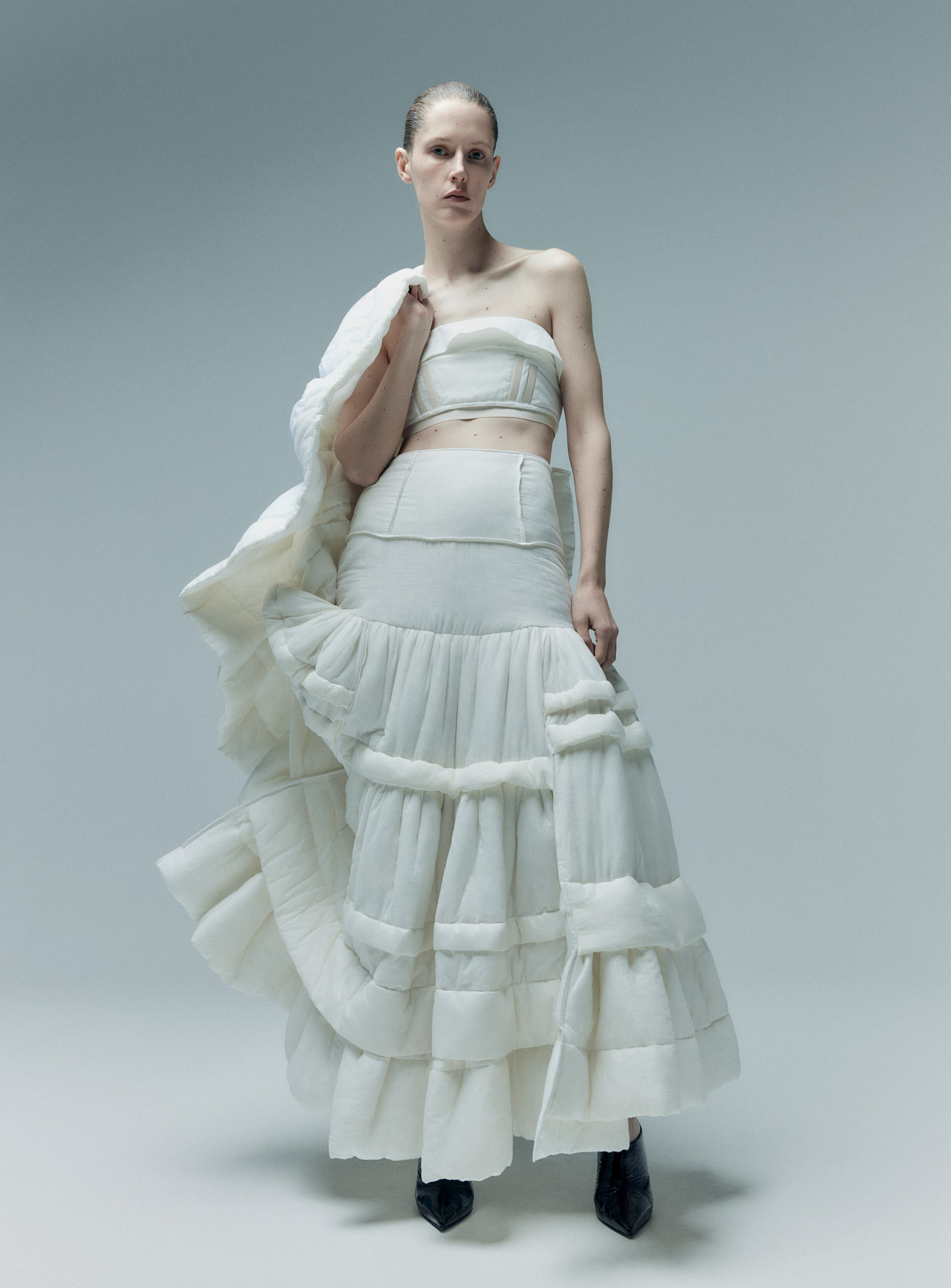
Molly Goddard. Top, £450; skirt, £2,750, both by Molly Goddard. Shoes, £790, by Alexander McQueen
The pin: a tool of transformation. The dressmaker can use it to wield power over a piece of fabric. It is an act of sculpting, intuitive and instant, without the need to whittle away at marble, stone, wood or metal. Neolithic man would use pins of wood, bone or thorn to hold skins and furs to the body, while in Roman times, gold and silver pins created the draped forms of antiquity, piercing through the cloth of a toga.
They say that to understand a garment, you must turn it inside out. When curators were working on the 2014 retrospective of 20th-century American couturier Charles James at New York’s Metropolitan Museum of Art, they said it was like undertaking an archaeologist’s excavation. Underneath the perfectly draped and cinched exterior fineries of James’ garments were intricate layers of underwire, whalebone and buckram cotton, all crammed together in an attempt by the designer to reshape the female form.
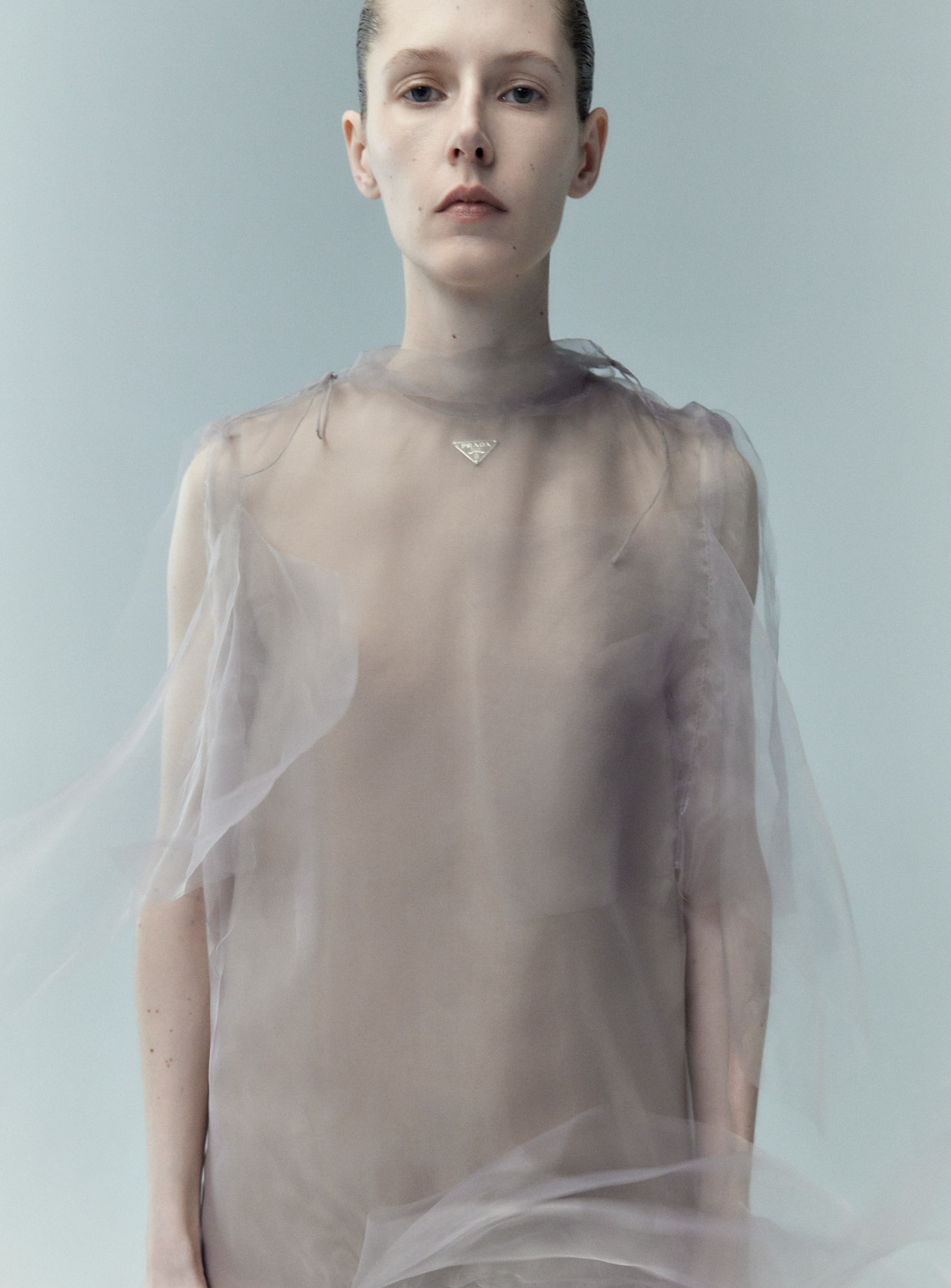
Prada. Dress, price on request, by Prada
James, who was credited with inspiring the nipped waist of Christian Dior’s New Look, found women’s bodies to be cumbersome so he approached clothing like an anatomist. Underneath their exterior beauty, his clothes were orthopaedic, heavy, sometimes painful. But despite this, most of the women who wore them – Gypsy Rose Lee, Babe Paley, Marlene Dietrich – experienced a kind of delirious liberation. ‘Diabolical,’ said Virginia Woolf of his gowns. ‘But geometrically perfect.’
Pins were James’ foremost tool: those who worked with him in his atelier would begin not by touching the gowns but by picking up the pins from the floor. When trusted, they would be tasked with inserting the pins at James’ command, striking his desired angle of an exact 45 degrees into the fabric. If they were placed wrongly, he would fly into a rage.

Issey Miyake. Coat, £1,700; jacket (underneath), £1,170, both by Issey Miyake. Shoes, £790, by Alexander McQueen. Tights, £50, by Wolford
His final years are often painted as a time of bitter, misanthropic resentment, with him displaying particular ire towards those he believed he had influenced, like Halston. But James also became a part of New York counterculture, spending nights at Studio 54 and Max’s Kansas City. There, he no doubt witnessed the unrestrained dress codes of the city’s young; to go out, he would purportedly wear a pair of vertiginous platform boots. In his studio, people remember him trying on his dresses or luxuriating in a state of repose amid reams of silk and satin.
Receive our daily digest of inspiration, escapism and design stories from around the world direct to your inbox.
Bottega Veneta creative director Matthieu Blazy also talked about the pleasures of dressing up this season: ‘the simple wonder of dressing without boundaries’. In his S/S 2024 collection, gowns sprouted with anemone-like pom-poms, were dotted with bows, or fell away into delicate leather tassels. Others had undulating folds of fabric, or appeared as if boned, slipping off the shoulder. Taking place on a giant tiled map of the world and set against a euphoric soundtrack, featuring sounds of nature, he called it his odyssey, ‘a journey to who you would like to be and where you want to go, a journey of transformation and escape’.
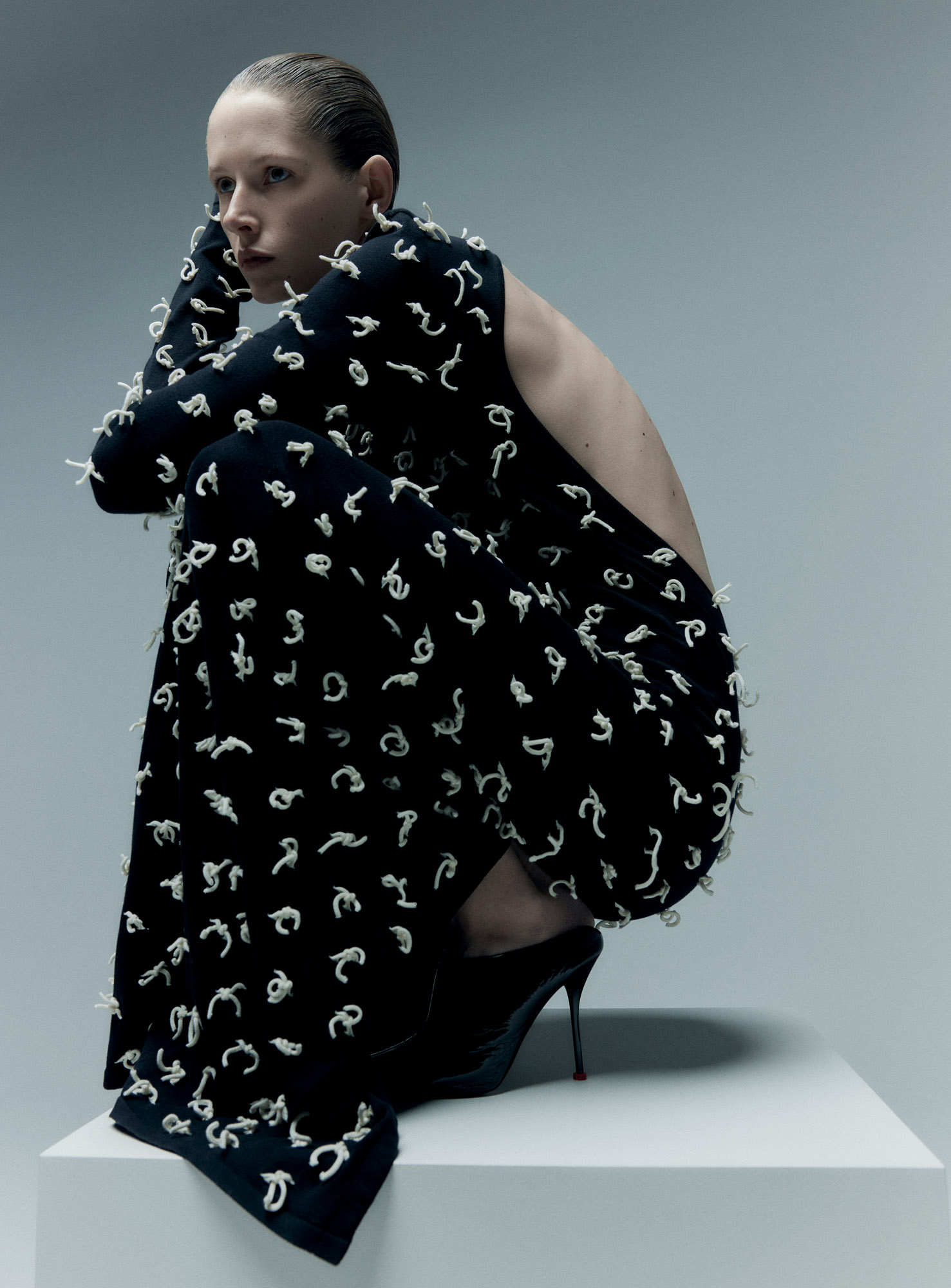
Bottega Veneta. Dress, price on request, by Bottega Veneta. Shoes, £790, by Alexander McQueen
John Galliano is well-versed in the primal desire for transformation and the notion of fashion as fantasy. At Dior, his creations were legendary in their construction. Silhouettes conjured up worlds and eras; to wear them was to become somebody new. As creative director of Maison Margiela, he has found another level of expression. His work is nothing like house founder Martin Margiela’s, which was reduced, obscured and enigmatic. Galliano’s work is pure spectacle, but he also seems to revel in Margiela’s desire to rewrite the history of clothing, to pull the familiar and accepted apart.
In his latest collection, Galliano revealed his clothing’s inner workings: seams were exposed and the dressmaker’s chalk was left as adornment. Bodices were torn from the body to expose stitching, while other garments contained flattened, laminated elements, inspired by clothes being packed into a suitcase. And Margiela’s influence continues to hover over the collections. He remains a favourite with fashion students, who, more than three decades on, still see a vision of modernity in his work. In interviews, the designer would often denounce the term with which he is most associated, deconstruction – maybe because he saw his work not as an act of undoing, but as part of the constant evolution of fashion, a conversation between past and future.

Balenciaga. Coat, €5,900; dress, €1,200; gloves, €295, all by Balenciaga
Molly Goddard also looked to the past this season, beginning her collection amid the evocative rails of the National Theatre’s costume archive. Despite their theatrical exteriors, Goddard instead turned the pieces inside out. Like Galliano, she was fascinated by the seams and imperfections she found within, and these emerged in duvet-like skirts and bustier tops, which conjured up a fusion of domesticity and languid glamour.
A similar mood was struck at Victoria Beckham, who looked towards the ballet rehearsal room for inspiration. Her collection felt like a dancer’s layers being put on and taken off. Delicate silk gowns – trails of thread looping around the bust, askew at the neck – evoked ballerinas being shepherded backstage for a quick change, the craft of the seamstress momentarily exposed.
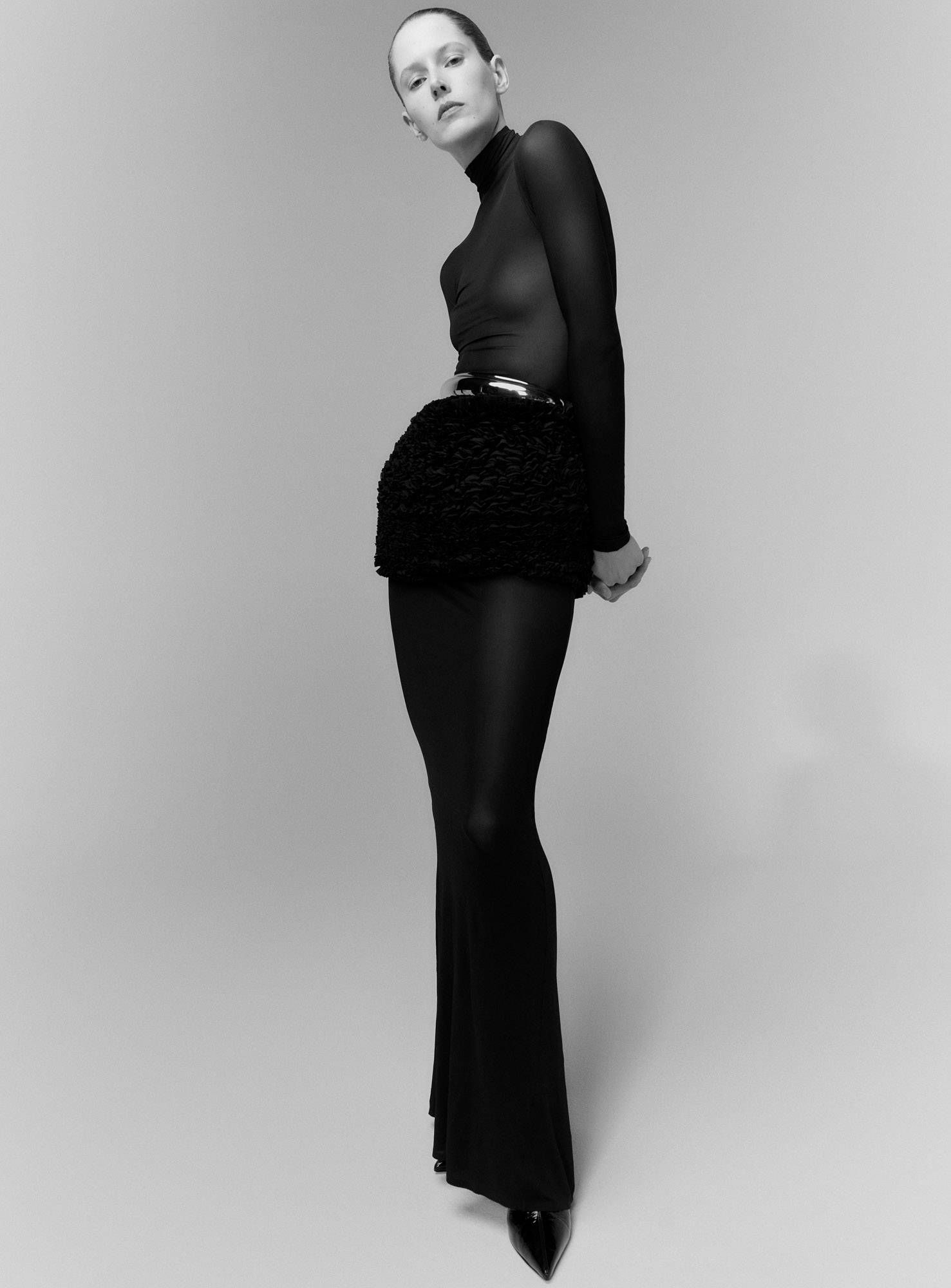
Alaïa. Dress, £4,720; belt, £2,050, both by Alaïa. Shoes, £790, by Alexander McQueen
At Balenciaga, vast swathes of fabric, like the red curtains of a theatre, provided the backdrop for Demna’s latest collection. If the effect was dramatic, the designer’s mind was on the minutiae: he called the pieces ‘engineered, with a couturier’s precision’. His garments are in a state of metamorphosis; he cuts and reshapes them until they are something new, all in a distinct language that has run throughout his tenure.
The show played out to a soundtrack by actress Isabelle Huppert, who read the instructions for creating a tailored jacket. The steps are so complex that it took more than an hour for Huppert to record them in full. Demna said he wanted to show that fashion is complex and that, beyond the theatrics, his garments take hours of craft.
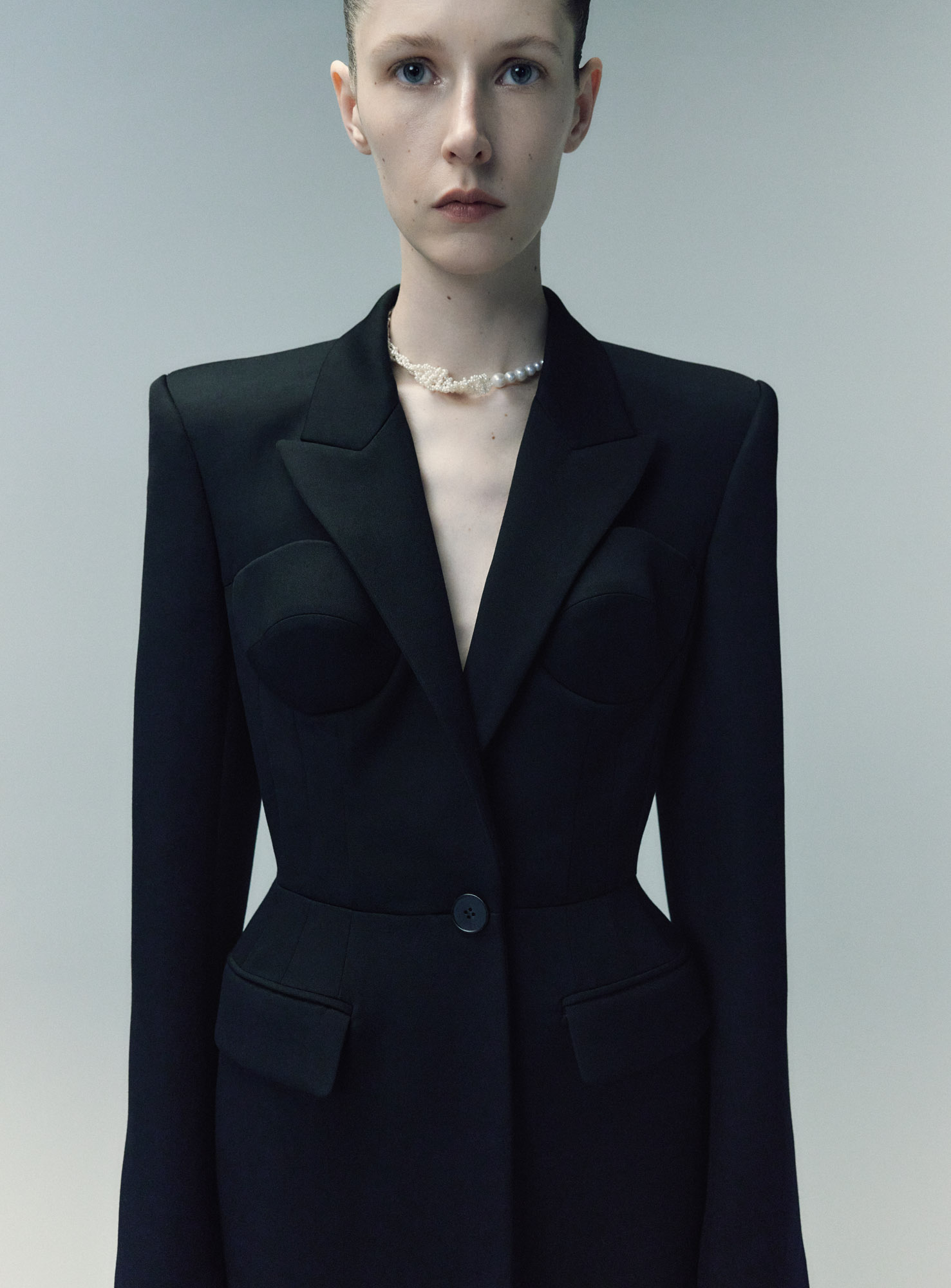
Alexander McQueen. Coat, £3,500, by Alexander McQueen. Necklace, £685, by Completedworks
Craft, creativity and imagination, all hinging on the placement of a pin – this is the unique magic of the dressmaker. At Prada, Miuccia Prada and Raf Simons always create extraordinary, unexpected clothing. This season, in lieu of collection notes, there was a description of each look: its fabric, its details, its construction. Most extraordinary was a series of gowns created from a blend of translucent silk and gazar. Purportedly, the fabric was so lightweight, the house had it patented. It was another fashion evolution.
At Issey Miyake and Alaïa, there were similar focuses on form. The former was inspired by the movement of a fluttering flag; gently creased dresses enveloped the body like a cocoon, while vast tailored jackets drew inspiration from the art of origami. At the latter, Pieter Mulier continued house founder Azzedine Alaïa’s desire to sculpt and shape the female body, with none of the restrictions that it might suggest. His forms this season were sinuous, occasionally erupting into intricate ruffles at the cuffs or hips.
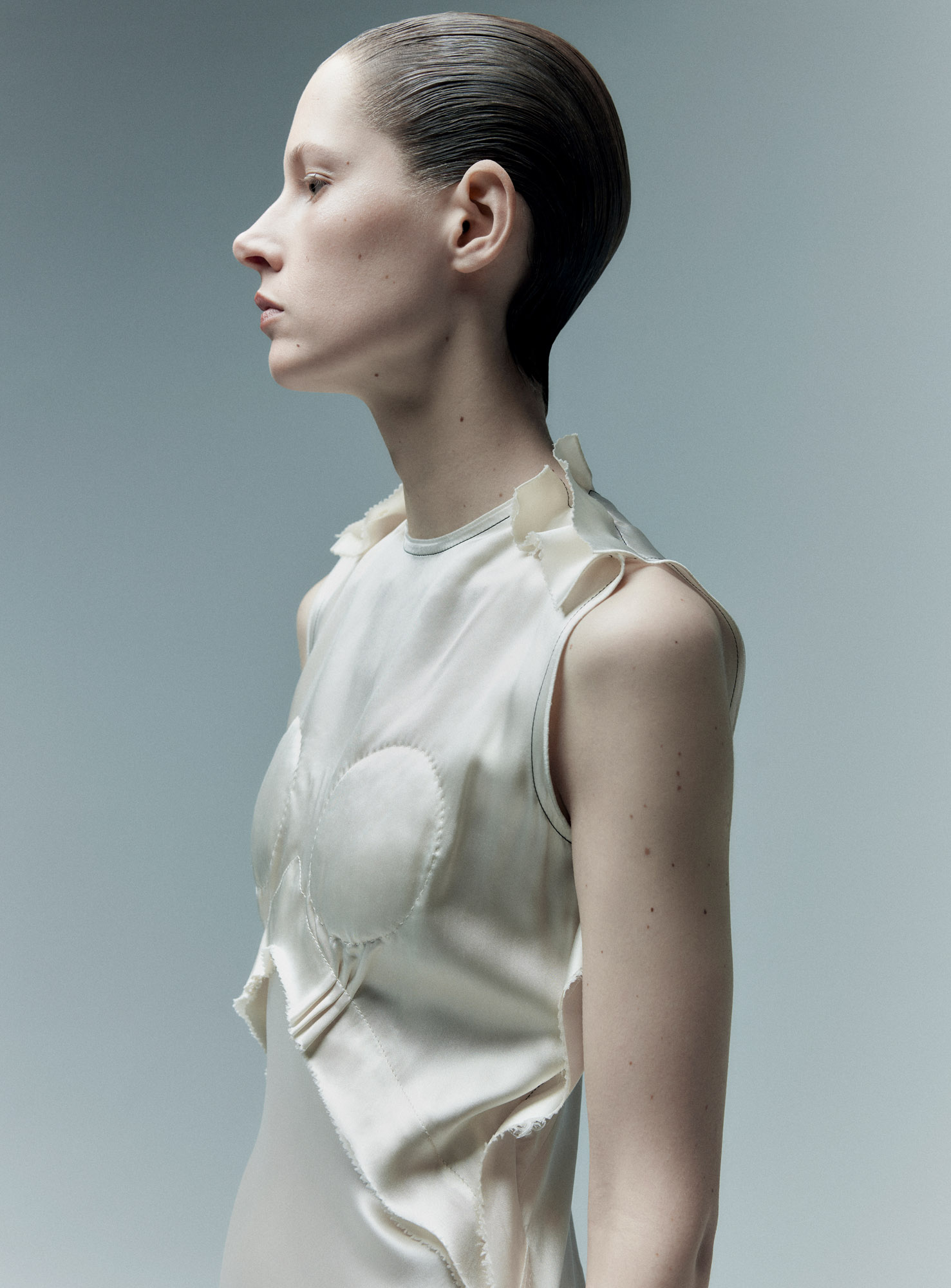
Victoria Beckham. Dress, price on request, by Victoria Beckham
The best designers have always been those who hone a vision season on season and, in doing so, create distinct, richly populated, creative worlds. Full-scale reinvention will always be futile. How many talented young designers – fuelled by the industry’s voracious desires and often led by external pressures – have been completely squeezed of creativity in the search for something new?
It is why young Dutch designer Duran Lantink is both an anomaly and a blueprint. He has been running his eponymous label for several years, though last season, his A/W 2024 collection marked something of a departure: showing in Paris for the first time, there was a new clarity to his silhouettes, which had previously been defined by a haphazard, DIY aesthetic (many of his garments were crafted from old, discarded clothing). Here, the focus was on form, the pieces seesawing between art and fashion: strange, bulbous shapes emerged from the chest, backpacks became vest tops, and trousers crept down to expose glimmering mini shorts beneath.
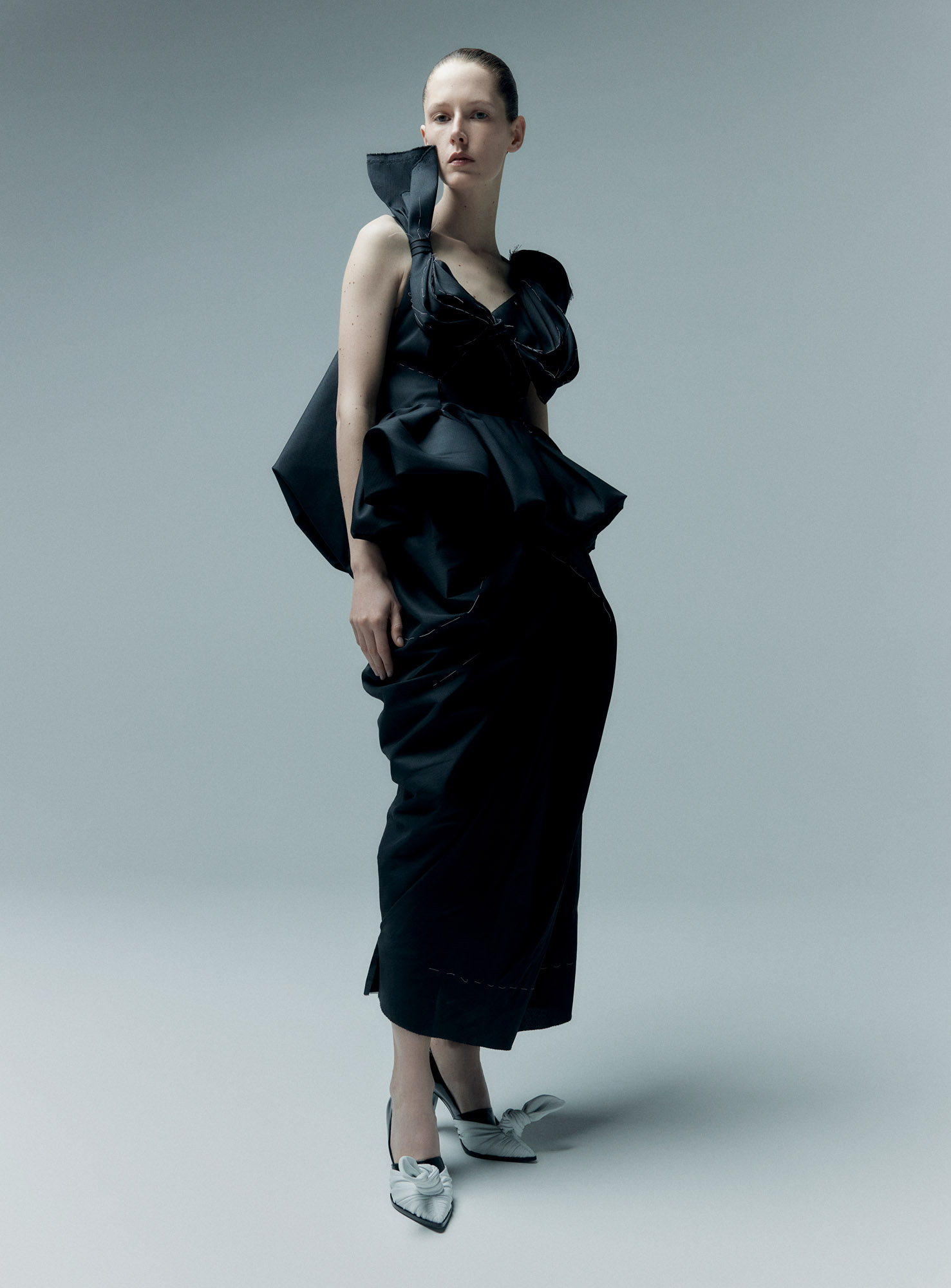
Maison Margiela. Dress, price on request, by Maison Margiela. Shoes, £942, by Louis Vuitton
His S/S 2024 collection proved to be even more extraordinary: padded, sculpted dresses recalled those slotted onto a doll; a pair of inflated denim shorts sat on the waist, like a rubber ring. These rings also appeared as bra tops or stitched into shirts; other silhouettes were dramatically pitched at the shoulder. Three-dimensional gowns in dolphin-like forms seemed to hover away from the body entirely.
It was an exercise in creativity, a transformation of the familiar into something new. But for all its novelty, for Lantink – a designer who has played the long game – this was not reinvention, but just another step in the steady metamorphosis from where the designer has been to where he wants to be. ‘I’m just experimenting,’ he says. ‘Focussing on form, trying to find my handwriting.’
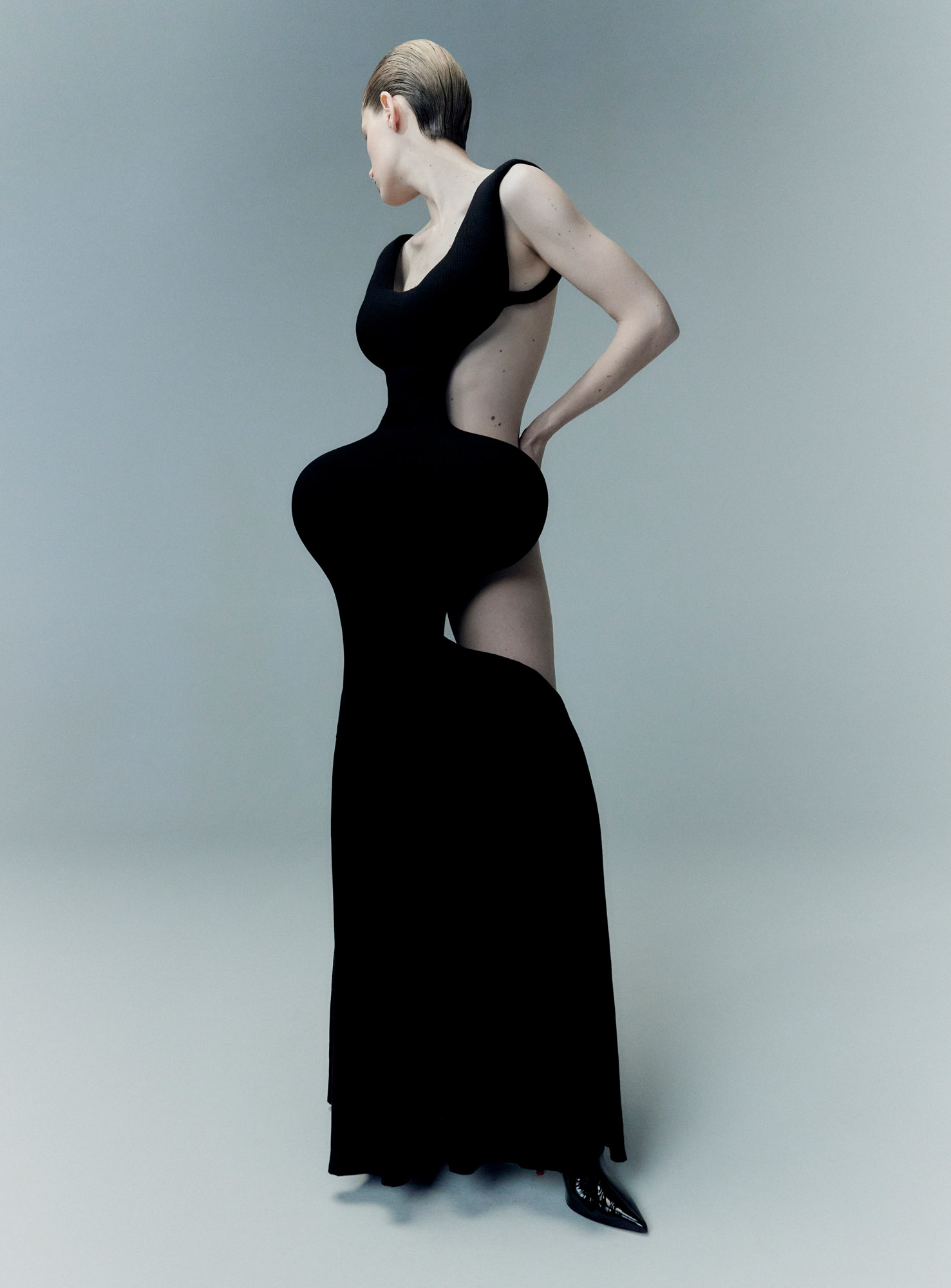
Duran Lantink. Dress, price on request, by Duran Lantink. Shoes, £790, by Alexander McQueen
Model: Maria Zakrzewska at Established Models. Casting: Ikki Casting at The Art Board. Hair: Roku Roppongi at Saint Luke using Sam McKnight. Make-up: Mattie White using Nars. Photography assistants: Matt Bramston, Pablo Gallegos. Fashion assistants: Kris Bergfeldt, Ady Huq. Digi tech: Al Habjan. Post-production: LAH Retouch.
A version of this article appears in the March 2024 Style Issue of Wallpaper* available in print, on the Wallpaper* app on Apple iOS, and to subscribers of Apple News +. Subscribe to Wallpaper* today.
Jack Moss is the Fashion Features Editor at Wallpaper*, joining the team in 2022. Having previously been the digital features editor at AnOther and digital editor at 10 and 10 Men magazines, he has also contributed to titles including i-D, Dazed, 10 Magazine, Mr Porter’s The Journal and more, while also featuring in Dazed: 32 Years Confused: The Covers, published by Rizzoli. He is particularly interested in the moments when fashion intersects with other creative disciplines – notably art and design – as well as championing a new generation of international talent and reporting from international fashion weeks. Across his career, he has interviewed the fashion industry’s leading figures, including Rick Owens, Pieter Mulier, Jonathan Anderson, Grace Wales Bonner, Christian Lacroix, Kate Moss and Manolo Blahnik.
-
 Nela is London's new stage for open-fire gastronomy
Nela is London's new stage for open-fire gastronomyA beloved Amsterdam import brings live-fire elegance to The Whiteley’s grand revival
-
 How we host: with Our Place founder, Shiza Shahid
How we host: with Our Place founder, Shiza ShahidWelcome, come on in, and take a seat at Wallpaper*s new series 'How we host' where we dissect the art of entertaining. Here, we speak to Our Place founder Shiza Shahid on what makes the perfect dinner party, from sourcing food in to perfecting the guest list, and yes, Michelle Obama is invited
-
 Matteo Thun carves a masterful thermal retreat into the Canadian Rockies
Matteo Thun carves a masterful thermal retreat into the Canadian RockiesBasin Glacial Waters, a project two decades in the making, finally surfaces at Lake Louise, blurring the boundaries between architecture and terrain